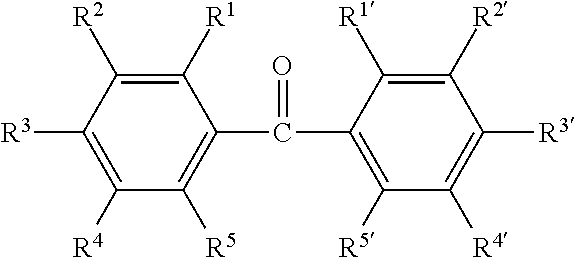Surface-modified metal and method for modifying metal surface
- Summary
- Abstract
- Description
- Claims
- Application Information
AI Technical Summary
Benefits of technology
Problems solved by technology
Method used
Image
Examples
example 1
[0075]The surface of a SUS flat plate (10 cm square, 1 mm in thickness) was washed with acetone and dried.
[0076]The plate was immersed in a 2% by mass aqueous solution of (3-acryloyloxypropyl)trimethoxysilane containing 2% by mass of acetic acid for 10 minutes, taken out and dried for 24 hours. The plate was then washed with acetone. The treated SUS plate was immersed in a 1% by mass solution of 2,4-diethylthioxanthone in acetone, taken out and dried.
[0077]On the surface of the dried SUS plate was dropped an aqueous solution of potassium 3-sulfopropyl methacrylate (1.25 M). Then, the surface was covered with a 1 mm thick glass plate, and the covered surface was irradiated with LED-UV (5 mW / cm2) having a wavelength of 365 nm for 6 hours to cause surface-initiated radical polymerization. Subsequently, the surface was washed with water to wash away unreacted monomer and the like. In this manner, a surface-modified metal was prepared.
example 2
[0078]The surface of a SUS flat plate (10 cm square, 1 mm in thickness) was washed with acetone and dried.
[0079]The plate was immersed in a 2% by mass aqueous solution of (3-acryloyloxypropyl)trimethoxysilane containing 2% by mass of acetic acid for 10 minutes, taken out and dried for 24 hours. The plate was then washed with acetone. The treated SUS plate was immersed in a 1% by mass solution of 2,4-diethylthioxanthone in acetone, taken out and dried.
[0080]On the surface of the dried SUS plate was dropped an aqueous solution of potassium 3-sulfopropyl methacrylate (1.25 M). Then, the surface was covered with a 1 mm thick glass plate, and the covered surface was irradiated with LED-UV (5 mW / cm2) having a wavelength of 365 nm for 12 hours to cause surface-initiated radical polymerization. Subsequently, the surface was washed with water to wash away unreacted monomer and the like. In this manner, a surface-modified metal was prepared.
example 3
[0081]The treatment with a silane coupling agent, the treatment with 2,4-diethylthioxanthone, and drying were carried out in the same manner as in Example 1, except that the SUS plate was changed to a SUS guide wire (core wire).
[0082]Subsequently, the dried guide wire was put in a glass vessel containing an aqueous solution of 2-(methacroyloxy)ethyl trimethylammonium chloride (1.25 M), and the vessel was sealed with a stopper. After argon substitution was performed for two hours to remove oxygen, the glass vessel was irradiated with LED-UV (5 mW / cm2) for 96 hours while being rotated, to cause surface-initiated radical polymerization. In this manner, a surface-modified metal was prepared.
PUM
| Property | Measurement | Unit |
|---|---|---|
| Thickness | aaaaa | aaaaa |
| Fraction | aaaaa | aaaaa |
| Fraction | aaaaa | aaaaa |
Abstract
Description
Claims
Application Information
 Login to View More
Login to View More - R&D
- Intellectual Property
- Life Sciences
- Materials
- Tech Scout
- Unparalleled Data Quality
- Higher Quality Content
- 60% Fewer Hallucinations
Browse by: Latest US Patents, China's latest patents, Technical Efficacy Thesaurus, Application Domain, Technology Topic, Popular Technical Reports.
© 2025 PatSnap. All rights reserved.Legal|Privacy policy|Modern Slavery Act Transparency Statement|Sitemap|About US| Contact US: help@patsnap.com



